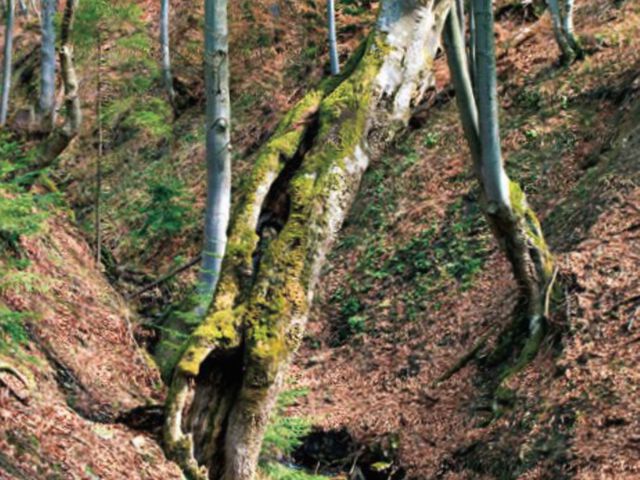year of foundation - 1995
area - 44.67 ha
genus - forest reserve
subject of protection - the Carpathian beech complex with a diverse species composition
access - from Szczawnik along the trail to Wielka Bukowa (red signs)
The Żebracze reserve is located in the Szczawnik forest district, in the Piwniczna forest district, where it occupies a part of the Kotylniczy Wierch slope. Beech and fir stands, the average age of which is about 150 years, are located on a steep slope with a south-west exposure, at an altitude of 700 to 1000 m above sea level. The predominance of beech in the undergrowth indicates that this species will also dominate in the future. The tendency of fir displacement by beech is, to say the least, noticeable in the stands of lower montane zone throughout the Beskids.
The largest area of the reserve is occupied by the Carpathian beech forest, where 4 variants of this complex have been distinguished: a typical variant, a common-room and cuff-loom variant with a female common room and a short-edged dumb-bell, a reed variant with forest reed and a variant with impatiens common. The reed variant, similar to the acidic beech forest, occurs in more exposed, well-lit places. In the undergrowth, there is also the protected wood madder and, moreover, the yellow gamekeeper. In clearly wetter places, with less access to light, the forest floor is covered with an impatiens variant, while in steep and rocky places there is a typical variant. In addition to the penis and the daylight, other ferns were also noted in the group, such as the javelin recess and the triangular recess.
In places where the soil is less rich in nutrients, there are beech stands belonging to the Luzulo nemorosae-Fagetum acid beech complex. In the reserve, however, it is of marginal importance as it occurs on a relatively small area. Compared to the heavily devastated and rejuvenated stands in the vicinity, this forest is a well-preserved old forest of the former Carpathian Primeval Forest. Numerous rock outcrops are an additional advantage.



















